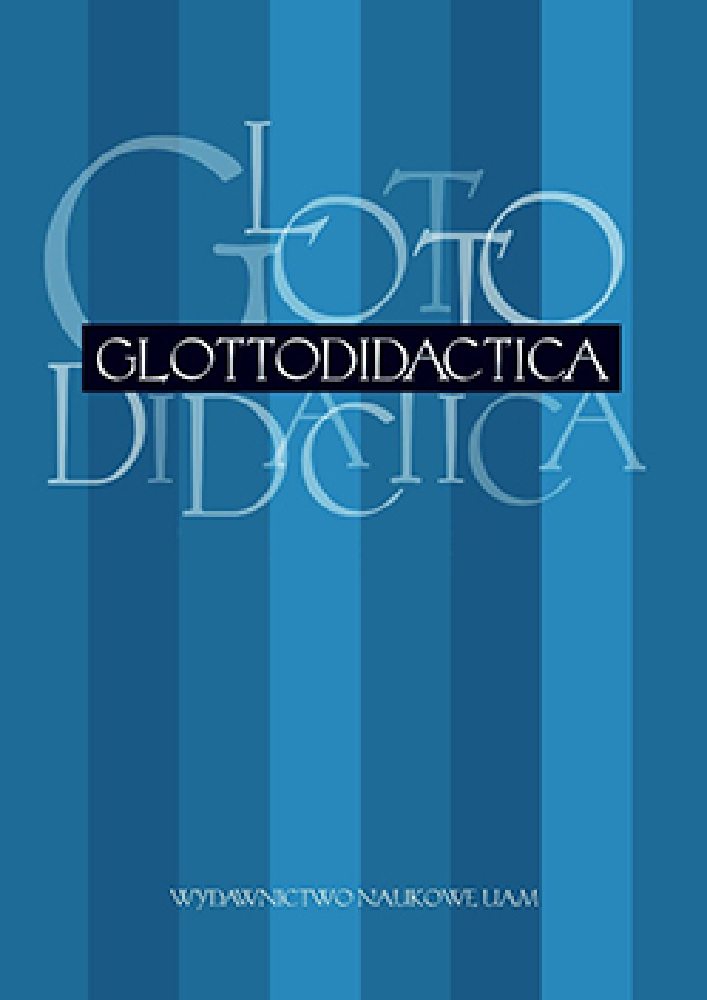Abstract
The author shows the methods, technics and principles of the developing oft the translatory competences on the concrete translation of the advertisement with the outstanding intertextuality. His didactic model of the transtatory training gives accent on the unambiguous definition of the target recipient of the advertisement and the connection both of them the esthetic and persuasive functions in the target text for the target culture, which is impossible without the creative mind and creative language performance of the translator.
Literaturhinweise
Fišer, Z., 2009. Překlad jako kreativní proces. Brno: Host.
Heinemann, W., Viehweger, D. 1991. Textlinguistik. Eine Einführung. Tübingen: Max Niemeyer.
Kußmaul, P. 1999. Semantik. In: Snell-Hornby, M., et al. Handbuch Translation. Tübingen: Stauffenburg, 49–53.
Kußmaul, P. 2000. Kreatives Übersetzen. Tübingen: Stauffenbug.
Kußmaul, P. 2007. Verstehen und Übersetzen. Ein Lehr- und Arbeitsbuch. Tübingen: Gunter Narr.
Lakoff, G. 1987. Women, Fire, and Dangerous Thinks. What Categories Reveal about the Mind. Chicago: University of Chicago Press.
Nord, Ch. 1988. Textanalyse und Übersetzen: theoretische Grundlagen, Methode und didaktische Anwendung einer übersetzungsrelevanten Textanalyse. Heidelberg: Julius Gross.
Reiß, K., Vermeer, H.J. 1991.Grundlegung einer allgemeinen Translationstheorie. Tübingen: Niemeyer.
Snell-Hornby, M. 1999. The ultimate comfort: Word, Text and the Translation of Tourist Brochures. In: Anderman, G., Roges, M. (Hrsg). Word, Text, Translation. Liber Amicorum for Peter Newmark. Clevedon: Multilingual Matters Ltd., 95–103.
Turner, M. 1996. The Literary Mind: The Origins of Thought and Language. Oxford University Press.
Vaňková, I. (Hrsg.). 2005. Co na srdci, to na jazyku. Kapitoly z kognitivní lingvistiky. Praha: Nakladatelství Karolinum.
Lizenz
Authors
Authors of texts accepted for publication in Glottodidactica are required to complete, sign and return to the editor's office the Agreement for granting a royalty-free license to works with a commitment to grant a CC sub-license.
Under the agreement, the authors of texts published in Glottodidactica grant the Adam Mickiewicz University in Poznań a non-exclusive, royalty-free license and authorize the use of Attribution-NoDerivatives 4.0 International (CC BY-ND 4.0) Creative Commons sub-license.
The authors retain the right to continue the free disposal of the work.
Users
Interested Internet users are entitled to use works published in Glottodidactica since 2016, under the following conditions:
- attribution - obligation to provide, together with the distributed work, information about the authorship, title, source (link to the original work, DOI) and the license itself.
- no derivatives - the work must be preserved in its original form, without the author's consent it is not possible to distribute the modified work, such as translations, publications, etc.
Copyrights are reserved for all texts published before 2016.
Miscellaneous
Adam Mickiewicz University in Poznań retains the right to magazines as a whole (layout, graphic form, title, cover design, logo etc.).




